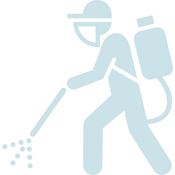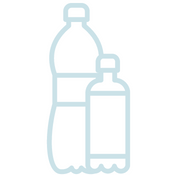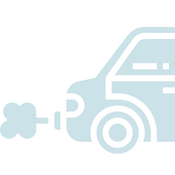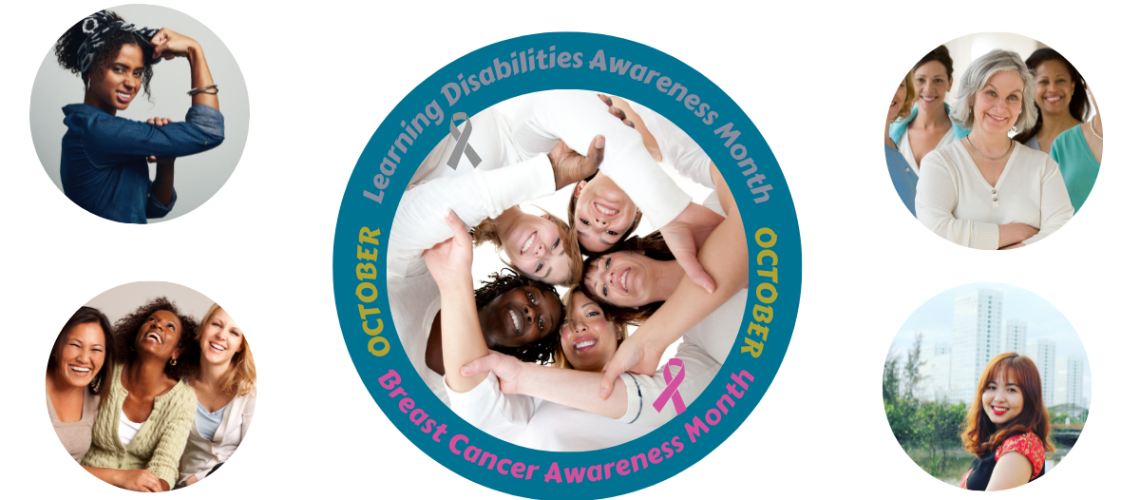
Bisphenol-A, or BPA for short, is a common chemical found in many consumer products such as the plastics used to make baby toys and the lining and lids of food containers. It is also frequently found in dental sealants, cash register receipts, reusable water bottles, and compact discs.
Making these simple changes can reduce your exposure:
- Avoid canned foods. Choose frozen if fresh food is not available.
- Avoid clear, shatterproof plastic food and drink containers (sometimes labeled with the recycling code 7).
- Avoid handling thermal receipts.
- Choose BPA-free baby bottles and child cups.
It is important to be aware that the alternatives to BPA have not been adequately tested. Glass and stainless steel containers are your safest bet. BPA-free labels unfortunately do not always mean the product is safe.

Cadmium is a metal that enters the bloodstream via food, drinking water, and air. It is most often used in batteries, coatings and plating, semi-conductors, and as a stabilizer for plastics.
To reduce your exposure:
- Wear appropriate personal protective equipment, including protective clothing and breathing masks, when working in metal, plastic, or waste management fields.
- Avoid nickel-cadmium batteries and dispose of them safely.
More about cadmium and other metals.

Chlorpyrifos is a pesticide and insecticide finally banned for food use in the US but is still used in other countries and used here in the US for pest control. It is an endocrine disruptor and breast carcinogen. Multiple studies show that even low levels of chlorpyrifos and other organophosphates, or OP pesticides, can permanently harm children’s cognitive skills.
Tips to avoid exposure to chlorpyrifos:
- Wash produce well before eating. Where possible, buy USDA certified organic produce, which has not been treated with pesticides or herbicides.
- For both yourselves and your pets, avoid flea and tick collars that contain chlorpyrifos.
- Wear fitted protective clothing including long sleeves, pants, boots, gloves and masks when exposed to pesticides containing toxic chemicals. Clothing made of synthetic material is more resistant to penetration by pesticides. [1] [2]
More about chlorpyrifos and pesticides.

The EPA banned PCBs from new products in 1976, but due to their persistence in the environment, these chemicals are still found in soil, riverbeds and dust particulates in homes. They also remain in products manufactured prior to the ban such as paper, plastics and paints.
To avoid exposure to PCBs:
- Avoid hazardous waste sites.
- Avoid eating certain types of fish, such as pike or perch, and abide by advisories.
- Children should avoid playing with old appliances.
- More recommendations from the Centers for Disease Control are available here.

Known as “Forever Chemicals,” PFAS chemicals are a family of synthetic chemicals that build up in humans and can be found in non-stick cookware, personal care products, dental floss, stain-resistant carpeting and furniture, outdoor clothing and gear, and food packaging and contact paper (e.g., fast food wrappers, microwave popcorn bags). PFAS are also found in firefighter turnout gear (personal protective gear) and foams. Several PFAS including PFOA are linked to cancer and are potentially neurotoxic.
To reduce your exposure to PFAS chemicals:
- Do not use non-stick cookware made from per- and poly-fluorinated substances. Instead, use ceramic coated non-stick or well-seasoned cast iron cookware.
- Avoid food contact paper treated with grease-resistant coatings, like paper wrapping and coated cardboard boxes used at fast food restaurants.
- Avoid “anti-aging” cosmetics containing PTFE.
- People living in areas with PFOA contaminated drinking water should consider drinking bottled water.

Phthalates are a group of chemicals used to soften and improve the flexibility and durability of plastics. Phthalates are found in a wide variety of products, including plastics, building materials, cleaning products, insecticides, pharmaceuticals, food packaging, home décor, children’s toys, and personal care products. Used to soften plastics and added to inks and adhesives, they are so ubiquitous in the U.S. food supply that food is most Americans’ top source of phthalates exposure. Generally, the more highly processed the food, the more phthalates it may contain.
A few ways you can reduce your exposure:
- Become a label reader: Avoid buying personal care products that contain “fragrance” or “perfume.” Choose nail polish that is phthalate free and bring your own polish to the nail salon if they don’t offer a phthalate-free option. These are typically labeled “DBP-free” or “Toxic Trio Free.”
- Avoid plastics for food prep and storage: Food containers made from PVC plastics (i.e., number 3 plastics) contain phthalates, as do vinyl plastic cooking utensils, plastic food storage containers and plastic food packaging.[3],[4]
- Use glass, ceramic or metal for storage and preparation of hot foods. Avoid hot foods packaged in plastic. Microwave in glass or ceramic, never in plastic.
- Choose natural materials for your home. Avoid vinyl shower curtains, vinyl flooring, plastic window treatments, and vinyl replacement windows.
- Avoid fragrances and air fresheners. FDA regulations do not require companies to list fragrance components on ingredient labels, because fragrance formulations are considered proprietary. Phthalates (especially DEP) are often added to fragrance to make the scent linger. As a result, fragrances, perfumes and scented lotions, soaps and other products can contain phthalates. Limit your use of perfumes. Avoid using artificial air fresheners such as plug-ins, sprays or artificially scented candles. Look for naturally scented candles to freshen your home, or cut some fresh flowers, or simply open a window!

Polycyclic aromatic hydrocarbons (PAHs) are fat-loving chemicals that can accumulate in breast tissue. They are formed from from fossil fuel combustion. PAHs are found abundantly in the atmosphere. Humans are exposed to PAHs through inhalation of motor vehicle exhaust, cigarette smoke, or wood smoke. PAHs can also be consumed through charred and grilled foods.
Tips for avoiding exposure to PAHs:
- Wear respirators when exposed to burning wood outdoors.
- Do not burn wood or coal indoors, and ensure adequate ventilation of indoor stoves.
- Limit consumption of charred and grilled foods.[5]

Only 10% of breast cancers are attributed to genetics. Preventable causes of the disease include exposures to toxic chemicals and other environmental factors.
The National Academy of Sciences estimates that environmental factors, including toxic chemicals, cause or contribute to at least a quarter of learning and developmental disabilities in American children.
While we might not yet be able to eliminate all causes of breast cancer or learning and attention issues, there are some things we can do to reduce toxic exposures.
You can learn more about toxic chemicals linked to breast cancer in this comprehensive glossary created by Breast Cancer Prevention Partners.
You can learn more about reducing toxic exposures that may lead to learning disabilities by following our Healthy Children Project or becoming a member of our nationwide network!
[1] Damalas, Christos A, and Spyridon D Koutroubas. “Farmers’ Exposure to Pesticides: Toxicity Types and Ways of Prevention.” Toxics 4,1 1 (2016). doi:10.3390/toxics4010001.
[2] Alexander, Bruce H et al. “Biomonitoring of 2,4-Dichlorophenoxyacetic Acid Exposure and Dose in Farm Families.” Environmental Health Perspectives 115, 3 (2007): 370-6. doi:10.1289/ehp.8869.
[3] Rudel, R. A., Gray, J. M., Engel, C. L., Rawsthorne, T. W., Dodson, R. E., Ackerman, J. M., … Brody, J. G. (2011). Food packaging and bisphenol A and bis(2-ethyhexyl) phthalate exposure: findings from a dietary intervention. Environ Health Persp, 119(7), 914–920.
[4] Ji, K., Lim Kho, Y., Yoonsuk, P., Kyungho, C. (2010). Influence of a five-day vegetarian diet on urinary levels of antibiotics and phthalate metabolites: a pilot study with “Temple Stay” participants. Environ. Res. 110(4), 375-382.
[5] Center for Disease Control and Prevention (CDC). “Polycyclic Aromatic Hydrocarbons (PAHs).” Last modified November 2009. https://www.epa.gov/sites/production/files/2014-03/documents/pahs_factsheet_cdc_2013.pdf.


